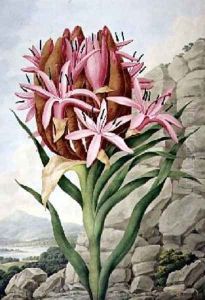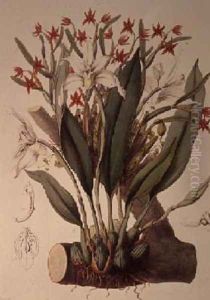John Lindley Paintings
John Lindley was a distinguished English botanist, born on February 5, 1799, in Catton, near Norwich, England. Lindley's contributions to botany are vast and varied, encompassing systematics, taxonomy, and economic botany. His work was critical in the establishment of modern botanical classification and in the promotion of horticulture. Despite his significant impact on the field, he is not as widely recognized outside of botanical circles as some of his contemporaries.
Lindley's early interest in plants was encouraged by his father, who was a nurseryman. This background provided him with a practical understanding of plants from a young age. Despite financial difficulties that prevented him from completing a formal university education, Lindley's passion and self-taught knowledge in botany propelled him into a successful career. By the age of 21, he had already published his first scientific work, 'Observations on the Structure of Fruits and Seeds,' which caught the attention of the botanical community.
Throughout his career, Lindley was involved in the organization and classification of plant collections, notably contributing to the establishment of the Royal Horticultural Society's garden at Chiswick and later at Kew. As a professor of botany at University College London from 1829 until his death in 1865, he was a dedicated educator who inspired many students. Lindley was also instrumental in saving the Royal Botanical Gardens at Kew from closure, recognizing its importance for scientific research and conservation.
Lindley authored several key works in botany, including 'The Introduction to the Natural System of Botany' (1830), 'A Synopsis of the British Flora' (1829), and 'The Vegetable Kingdom' (1846). His publications were not only significant for their scientific content but also for their attempt to make botanical knowledge accessible to a wider audience. Lindley's efforts in classifying orchids were particularly noteworthy, and he is credited with laying the foundations of modern orchid taxonomy.
John Lindley's legacy is preserved through the plants and genera named in his honor, such as the Lindleya genus. His dedication to botany was evident in his work until his death on November 1, 1865, in Turnham Green, London. Despite facing financial struggles throughout his life, Lindley's contributions have had a lasting impact on the field of botany, cementing his place as one of the 19th century's most important botanical figures.

